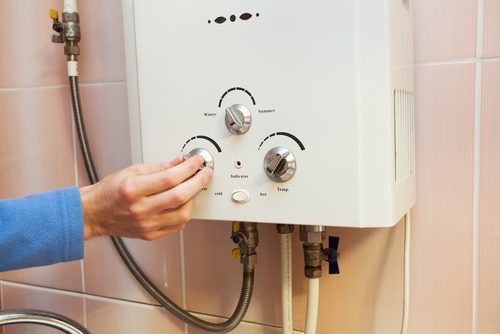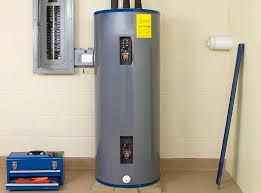We have come across this great article on Water Heater Maintenance Tips You Can't Afford to Forget below on the net and accepted it made sense to quickly share it with you on this site.

Warm water is crucial for day-to-day comfort, whether it's for a refreshing shower or cleaning meals. To ensure your warm water system runs effectively and lasts longer, normal upkeep is essential. This write-up supplies useful tips and understandings on how to keep your home's warm water system to stay clear of interruptions and costly repair services.
Introduction
Maintaining your home's warm water system might appear daunting, however with a couple of basic steps, you can guarantee it operates efficiently for many years to come. This overview covers whatever from understanding your warm water system to DIY upkeep ideas and understanding when to contact expert help.
Value of Maintaining Your Warm Water System
Normal maintenance not just prolongs the life-span of your hot water system yet also ensures it runs efficiently. Disregarding maintenance can cause decreased effectiveness, greater power costs, and even early failing of the system.
Signs Your Hot Water System Demands Maintenance
Recognizing when your hot water system needs focus can prevent major concerns. Look out for indications such as irregular water temperature, unusual sounds from the heating system, or rusty water.
Comprehending Your Warm Water System
Before diving right into upkeep tasks, it's valuable to comprehend the standard components of your hot water system. Typically, this includes the water heater itself, pipelines, anode poles, and temperature level controls.
Monthly Maintenance Tasks
Normal month-to-month checks can help catch minor problems before they intensify.
Purging the Water Heater
Flushing your water heater eliminates debris accumulation, boosting performance and lengthening its life.
Monitoring and Replacing Anode Rods
Anode rods prevent corrosion inside the storage tank. Checking and changing them when worn out is important.
Checking and Changing Temperature Level Setups
Changing the temperature settings guarantees ideal performance and security.
Do It Yourself Tips for Upkeep
You can carry out several maintenance jobs on your own to maintain your warm water system in leading condition.
Checking for Leaks
Frequently examine pipes and connections for leaks, as these can lead to water damages and greater costs.
Checking Stress Relief Valves
Evaluating the pressure safety valve guarantees it functions appropriately and protects against too much pressure accumulation.
Insulating Pipelines
Shielding warm water pipelines minimizes heat loss and can save power.
When to Call an Expert
While DIY maintenance is useful, some issues require specialist know-how.
Complicated Issues Calling For Specialist Aid
Examples include significant leaks, electric issues, or if your water heater is continually underperforming.
Regular Expert Upkeep Perks
Professional upkeep can include comprehensive examinations, tune-ups, and making sure compliance with safety and security requirements.
Conclusion
Normal maintenance of your home's warm water system is important for performance, durability, and price savings. By adhering to these ideas and knowing when to look for expert aid, you can guarantee a dependable supply of warm water without unexpected interruptions.
How to Maintain an Instant Hot Water Heater
- Before tinkering with your hot water heater, make sure that it’s not powered on. You also have to turn off the main circuit breaker and shut off the main gas line to prevent accidents. Also turn off the water valves connected to your unit to prevent water from flowing into and out of the appliance.
- 2. When you’re done, you have to detach the purge valves’ caps. These look like the letter “T†and are situated on either side of the water valves. Doing so will release any pressure that has accumulated inside the valves while at the same time avoid hot water from shooting out and burning your skin.
- 3. When the purge valves’ caps are removed, you have to connect your hosing lines to the valves. Your unit should have come with three hoses but if it didn’t, you can purchase these things from any hardware or home repair shops. You can also get them from retail stores that sell water heating systems. Read the user’s manual and follow it to complete this task properly. When the hosing lines are connected, open the purge port’s valves.
- 4. You should never use harsh chemical cleaners or solutions when cleaning your unit. Make use of white vinegar instead. It should be undiluted and you’ll probably use about 2 gallons.
- 5. Now flush your water heater. This task should probably take about 40 minutes. We can’t give you specific directions for this because the procedure is carried out depending on the type, model and brand of your heater. With that being said, refer to the user’s manual.
- 6. When you’re done draining the unit, you have to turn off the purge port valves again. Remove the hosing lines that you earlier installed on each of the water valves. Put the valve caps (purge port) back in their respective places and be very careful so as not to damage the rubber discs that are found inside these caps.
- 7. Now that everything’s back in place, check your user’s manual again to find out how to reactivate your water heating system.
- 8. Once it is working, turn one of your hot water faucets on just to let air pass through the heater’s water supply pipes. Leave the tap on until water flows smoothly out of it.
https://www.orrplumbing.com/blog/2014/september/how-to-maintain-an-instant-hot-water-heater/

As an avid person who reads on Tips For Maintaining Your Hot Water Heater, I thought sharing that information was essential. Do you know somebody who is excited about How to Maintain a Hot Water Heater in a Few Simple Steps? Why not promote it. We value your readership.
Call Today
Comments on “Best Practices for Maintaining Your Home's Hot Water System”